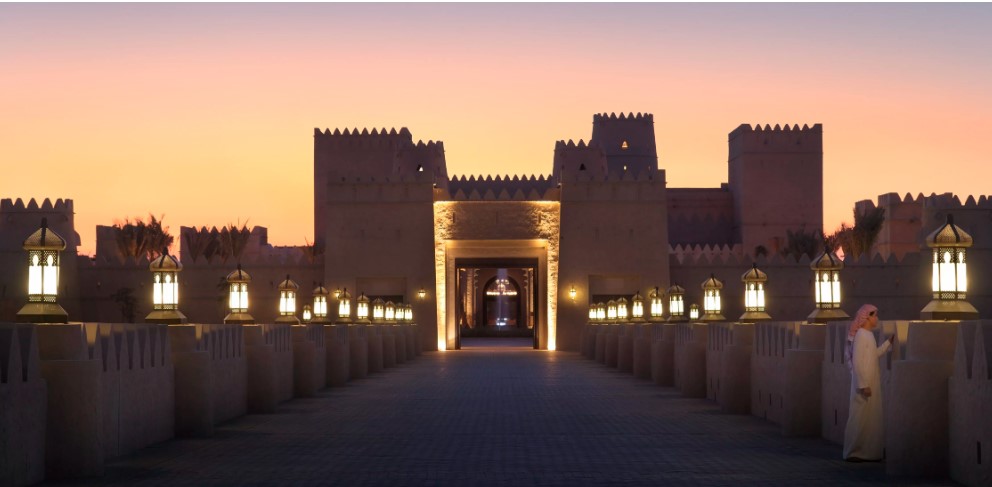U.A. EMIRATES – ANANTARA QASAR RESORT: JOURNEYS AMONG THE DUNES
21Mag2020 Filed under: Emirati Arabi Uniti, English Autore: PressSHIFTING SANDS: THE EMPTY QUARTER
Anantara Qasar Al Sarab resort
It’s morning rush hour in Dubai. Slinky sports cars and hulking SUVs edge along the Sheikh Zayed Road before slowing to a near crawl near the Dubai Mall – drivers consulting the shadow of the giant Burj Khalifa sundial; a metro train whooshing past, Gold Class passengers enjoying ample legroom and the sweet taste of privilege; an army of delivery boys rushing around with orders of soya lattes and flat whites for the power brokers in downtown Duba
What used to be a hostile and unforgiving environment inhabited by nomadic Bedouin tribes has since been conquered by human ingenuity (or so we humans like to think) and fashioned into a manmade oasis that is the Anantara Qasar Al Sarab resort.
Visually and aesthetically, Qasar Al Sarab is ‘1001 Nights’ meets Agrabah meets ‘Lawrence of Arabia’. Soaring walls (to ward off the invading sands rather than marauding armies), turreted gates and imposing watchtowers that look like they mean business are a nod to a traditional desert fortress. A perennially popular location for fashion shoots and wedding receptions, it’s a feast for the eye and a delightful fantasy that anyone with a taste for desert adventure can inhabit.

Qasar Al Sarab does a formidable job recreating a sense of a traditional Bedouin community where resident falcons, saluki dogs and camels do not seem like parts of a stage set but organically add to an oasis-like setting. Your senses are tickled by the sounds of traditional oud music, the aroma of cardamom-infused coffee, the silky touch of luxurious bedding and the colours of glorious sunsets.
During the day, life revolves around a cluster of palm-lined swimming pools. After nightfall the centre of gravity shifts to the open-air Bedouin camp restaurant strewn with Persian carpets and ornate cushions. Don’t expect a humble meal of dates and camel milk, however – a diet that sustained the roaming tribes in the past. Instead prepare for a lavish feast of assorted mezzeh to be scooped up with pita bread – the next perfectly shaped dome coming out of the oven just as you polish off its predecessor; followed by the meaty delights of kebabs, roasted lamb and shawarma and ending with heaving trays of syrupy pastry served with sweetened mint tea.
But it’s what lies beyond the turreted walls of this immaculately-kept sanctuary that makes it such a magnet for locals who come here to escape the fast-paced city life and reconnect with the past.

Crossing borders into four countries: Saudi Arabia, Yemen, Oman and the UAE, the Empty Quarter is a protected natural reserve and a glimpse into Gulf life before oil. Whether you arrive here from Dubai or Abu Dhabi, the contrast between the cutting-edge modernity of UAE’s coastal cities and this kingdom of shifting sands is striking.
As you leave your plush lodging to indulge in a spot of camel trekking, falconry or dune bashing, it feels that if you squint hard enough, you can spot Lawrence himself descending the crest of a sloping dune – the setting sun tinging his billowing white robe the many shades of nostalgia and romance.
Fonte: anantara.com

Leave a reply